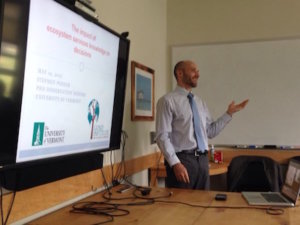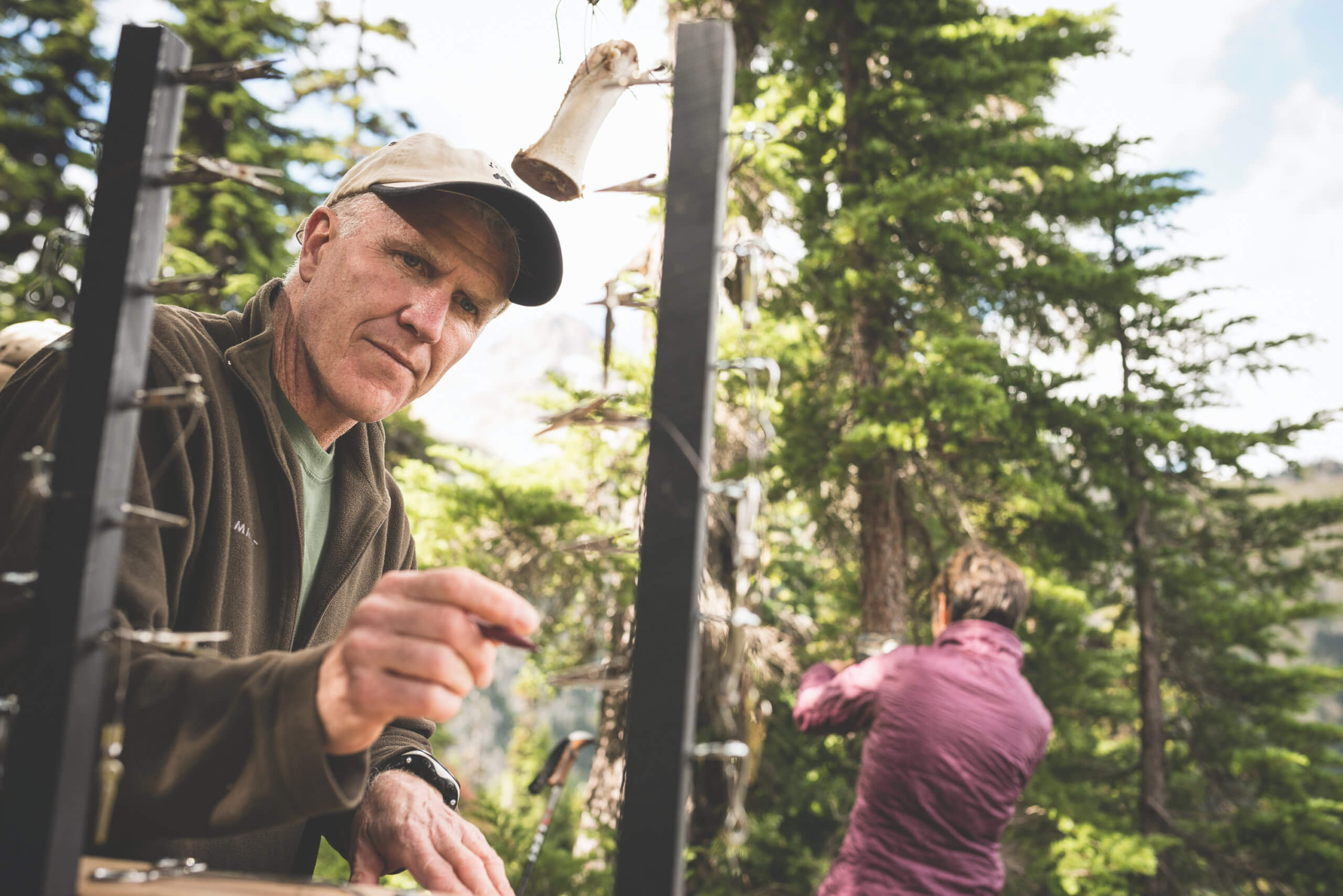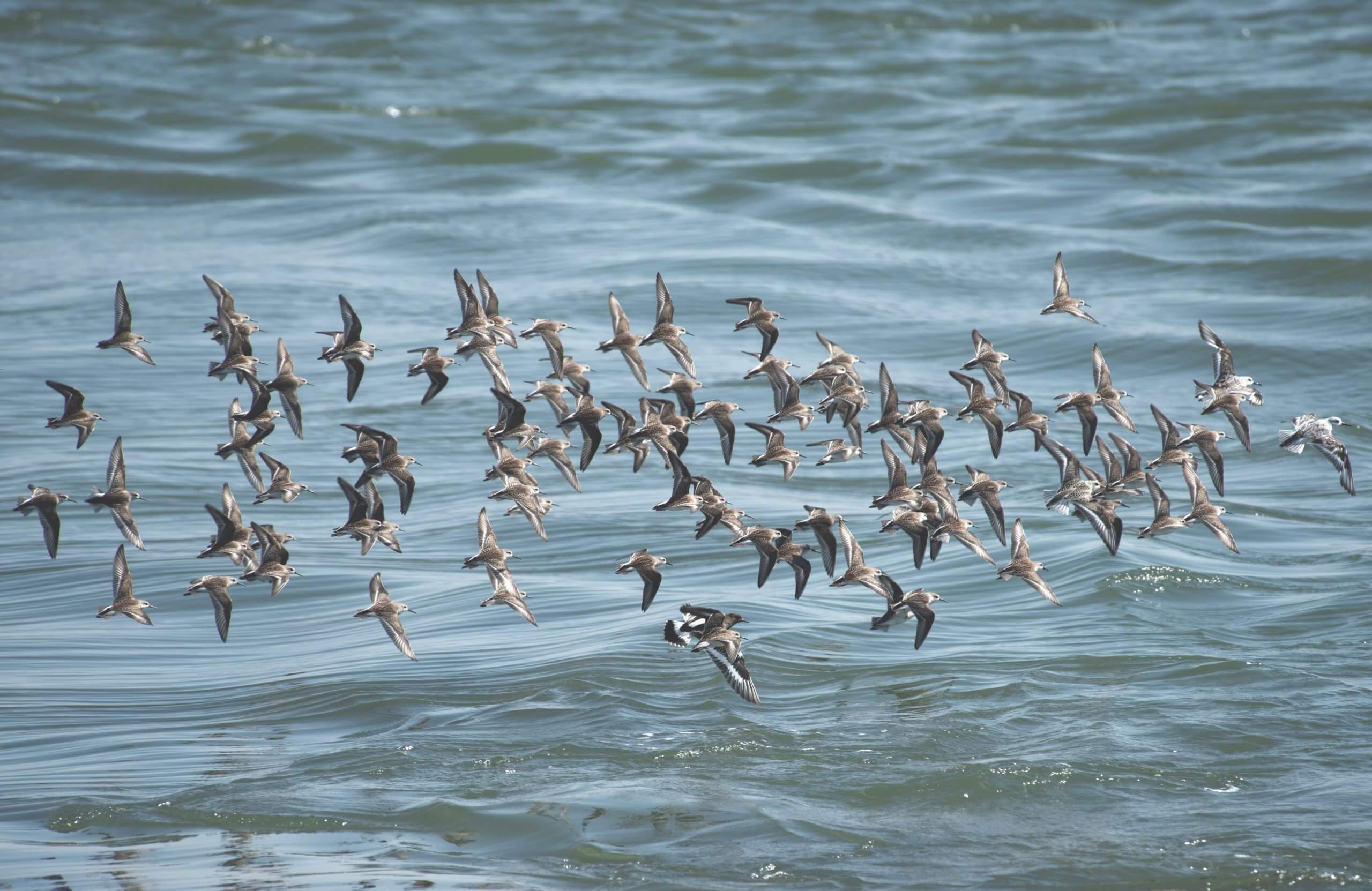I recently published a paper in the Proceedings of the National Academy of Sciences. It was the result of many months of research, but also an opportunity to learn what it’s like to be a scientist communicating about my research and engaging in public discourse about the environment. These lessons will serve me well as I create the conditions for other scientists to shine and to talk in clear and compelling ways about what their research means to policymakers.
Making Science Matter

Stephen at his dissertation defense. Photo courtesy of Dr. Stephen Posner.
Our paper, titled “Policy impacts of ecosystem services knowledge,” addresses the problem of how valuable scientific research about the environment often doesn’t lead to policy impact. By comparing across 15 international cases, my co-authors and I found that scientists may do important research with the aim of improving policy, but decision-makers are unlikely to listen unless they are meaningfully engaged. By engaging with policymakers and other stakeholders, scientists co-produce knowledge that decision-makers perceive as fair, unbiased, and representative of multiple perspectives –and thus more likely to be used and useful in policies that incorporate information about ecosystem services.
Message Box Benefits
Communicating about our paper showed me the central importance of the message box. I developed two crisp message boxes: one for a media audience, in case I was contacted by a journalist; and one for scholars or researchers, in case colleagues took interest in the study and wanted to discuss details. To refine them, I shared them with close colleagues, practiced my talking points, listened to constructive feedback, and honed my messages.
While I did not receive calls from journalists wanting to write a story about our paper, my preparation with the message box really paid off – I received very positive responses about the work from scholars in the field, I had about a dozen conversations with scientists inspired to do work along similar lines, and I felt more comfortable and confident talking about my work.
Support From A Network
I was fortunate to receive outreach and communication support from several different directions at once. Amy Mathews Amos at COMPASS expertly coached me on framing my core message for conversations with journalists. Co-author Emily McKenzie of WWF-UK and The Natural Capital Project helped me spread word about the paper through her organizations, as well as the amazingly interconnected Twitter-sphere. Meanwhile, co-author Taylor Ricketts of the Gund Institute for Ecological Economics and the University of Vermont facilitated an excellent Gund Institute story about our research.
Encouraged To Engage
The encouragement to engage was critical. Colleagues at COMPASS, especially, helped me see the value in actively talking about my work with key audiences (and the importance of practicing what we teach!). Discussing the paper further connected me to key conversations about ecosystem services in federal decision-making – a current focus of my work at COMPASS.
The final products continue to be useful resources. And the process of crafting message boxes was valuable as well. It was more difficult than I expected to pull my head out of the intricacies of the research that I focused on for so long. But when I did, using the message box tool and practicing it multiple times with trusted colleagues enabled me to more confidently and clearly articulate the key purpose of our research.
This experience of publishing in a top science journal taught me firsthand how to prepare for post-publication communication, consider my audiences, and hone my message – all things that I support scientists to do in my role at COMPASS. Having the practical experience of doing it myself, I know both how challenging – and rewarding – it can be.



